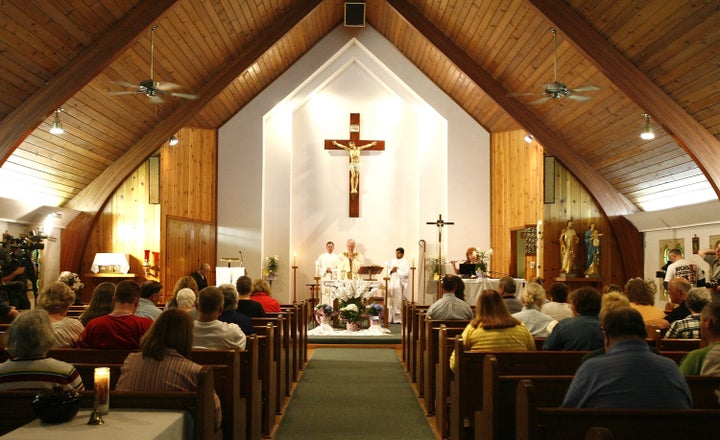
By Kristen Moulton
Salt Lake Tribune
SALT LAKE CITY -- Colleen McDannell knew the title of her new book, "The Spirit of Vatican II: A History of Catholic Reform in America," would be provocative.
Modernists talk of the Catholic Church not living up to "the spirit of Vatican II," while traditionalists mock the phrase as if it's a ruse for turning the council on its head.
Yet McDannell says the title was nonetheless perfect for what she wanted to do: Tell the story of how American Catholics negotiated a time of dramatic change in their church.
"There was a spirit, and it was not just a light, frivolous, hippie, mini-skirted-nun type of thing," said McDannell, a history professor at the University of Utah.
McDannell's eighth book focuses on the impact of the changes from the Second Vatican Council (1962-1965) on the people who lived through it, and who still feel its ripple effects nearly 50 years later.
"Many Catholics of an age remember this time in a warm and positive way, and that legacy endures," McDannell said. "The council was, for most Catholics, a breath of fresh air."
Vatican II is considered the most pivotal church council in recent centuries, not because it declared new doctrine but because it changed the way the faith engages the modern world. It described a whole new role for lay Catholics.
The documents produced by the council to guide the church "were more poetry than law," McDannell said. "The documents were meant to be inspirational and show through language an openness."
The most visible changes concerned the liturgy: priests began facing their congregations rather than the altar during Mass, and worship was in the local vernacular rather than Latin.
Lay people began reading the Scriptures at Mass and serving Communion. Women no longer covered their hair with veils. Guitars replaced Gregorian chants, and, for a time, popular folk songs were played.
"It was a call to lay people to take a more active stance with regard to the liturgy," said Kathleen Dolphin, director of the Center for Spirituality at St. Mary's College in Indiana, who organized a 2005 conference and yearlong series to celebrate the 40th anniversary of Vatican II.
"There were some people who went overboard with making the liturgy too ordinary," Dolphin said. "Some of it was silly and some of it got kind of vapid, but ... they were putting together the airplane while in flight."
The church also began conversing with those engaged in science, government and other faith traditions.
McDannell said the effects cascaded.
"The council," she explained, "opened up a space for Catholics to think critically, intelligently, thoughtfully, thoroughly, about their religious tradition."
For regular Catholics, Dolphin said, the changes were profound.
"There has been this consistent effort to tone down what happened at the Second Vatican Council," as if it were not a major turning point, Dolphin said. "But the people in the pews would say something really happened."
McDannell tells the story through the lens of her parents, particularly her mother, Margaret.
In 1960s Los Angeles, the archbishop was in no hurry to implement Vatican II reforms. But when the family moved to Denver in 1967, they found Vatican II in full flower, with an architecturally modern church, a priest who wanted to be called by his first name and guitar Masses.
Her Republican parents found themselves in a parish with a social-justice commission that took up collections for Cesar Chavez's United Farm Workers Union and sponsored a refugee family from Vietnam.
"Although she chose not to boycott nonunion grapes and lettuce, she did begin a long relationship with an order of priests who worked among the poor in Appalachia," McDannell writes of her mother. "For Margaret and many of her generation who were critical of liberal protests, the parish served as a trusted interpreter of world culture and politics."
While it was not part of her mother's story, McDannell talks about one of the other consequences of Vatican II: the hemorrhage of American Catholics out of the church.
"It's ... indicative of Catholics thinking the church did not go far enough in making changes, in its attitude toward homosexuality, toward women in the priesthood, toward birth control," McDannell said. "For many people, they just got frustrated with that -- the promise that we moved so far but not far enough."
McDannell was one of them. She eventually stopped practicing her faith and now describes herself as a secular humanist. "Where the church seemed to be going," she said, "was not where I thought I wanted to go."
Nonetheless, she calls herself a "confusing Catholic."
The publication of her book is bittersweet, because her mother died Dec. 13, as it was going to press.
"I feel confident that I told her story in an honest and straightforward way," McDannell said. "This was not a woman who in any way was a liberal hippie, but it (Vatican II) allowed her to participate in the changes ... in that era in a way that made sense to her. For many serious Catholics, it really revitalized their relationship to their faith and the tradition itself."